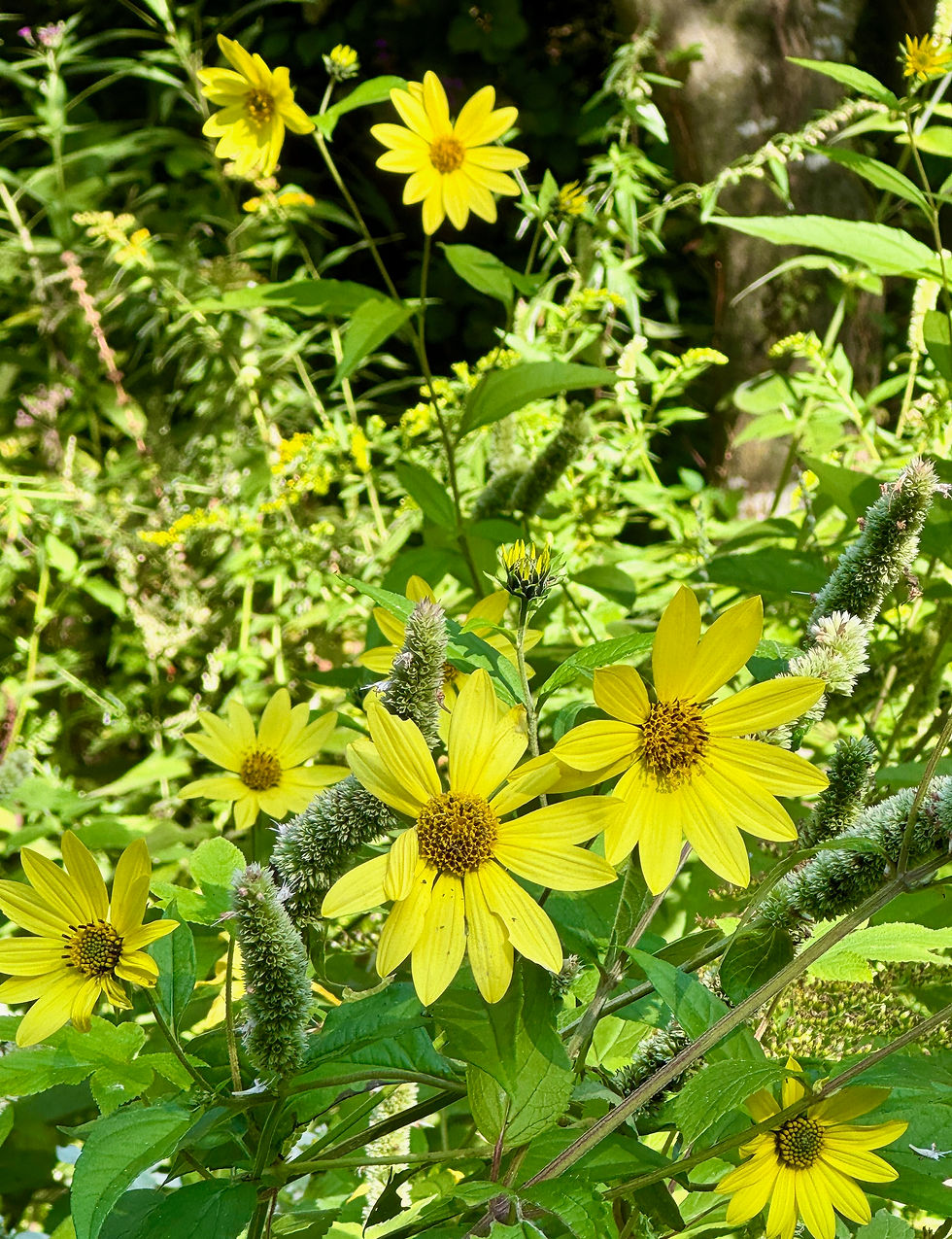THE GRATEFUL GARDENER
- betsy862
- Sep 18
- 3 min read
by Tim Kennelty
It’s Fall: Time to Plant Native Perennials
Hi, I’m Tim Kennelty. I live in the Town of Taghkanic. I’m a Master Gardener and trained as a
Master Naturalist and Master Forest Owner through Cornell Cooperative Extension. This is my inaugural column where I hope to regularly share some tidbits on nature and gardening with links to relevant episodes of Nature Calls, a podcast that I co-hosted as well as more detailed information and articles if you want to take a deeper dive on topics discussed.
I tend to get a little bit blue when the days get shorter and the nights get a little cooler with the arrival of Fall. But turns out that Fall is a great time to be in the garden, whether you’re appreciating beautiful asters or planning to create a new perennial bed for next Spring. If you’re a planner (I am) and patient (I’m not), you might want to eliminate some of your lawn and start a new perennial bed now, hopefully with lots of natives. Fall is a great time to start the process. You can do this by marking off your bed and smothering the grass with cardboard, grass clippings, mulch, etc. with a method called "lasagna gardening.” See: Lasagna Gardening
By next Spring you’ll have a brand new bed to plant in.
Fall is also a good time to add perennials to an existing bed. It’s really not too late. As a
plantaholic, in the Fall I often buy and plant flats of plugs or potted perennials in bare areas where others didn’t fare so well during the season. Just consider mulching around them so they don’t heave with freezing and thawing in winter. And then you’ll have the pleasure of having new perennials sprouting next Spring. For more information, see:
Native perennial seed gathering is also a fun and rewarding activity for the Fall. If you have lots of flowering perennials that are winding down, you can simply collect seeds when they ripen, store them in labeled jars or plastic containers and have them ready for early Winter or Spring sowing. I’m thinking of hosting a seed gathering party at my garden. Stay tuned. Some good natives for fall seed gathering are: Asters; Coneflowers; Rudbeckia; Joe Pye Weed; Ironweed; Giant Hyssop; Skullcap and Senna. The seeds of many of these plants need to go through a period of vernalization (sustained cold temperatures) to germinate in Spring so you can either store them in your fridge or direct sow them after Thanksgiving. For more information see:
Finally, there are many beautiful and ecologically important native perennials that you can enjoy in bloom in the Fall. Some of these are Asters, Goldenrods, and Perennial Sunflowers. Native Asters usually fall into two camps: New England or New York Asters, but there are many others For a deeper dive on native Asters, see: https://theplantnative.com/plant/aster/

There are also many different species of Goldenrod. Most are not as aggressive as the
Canadian Goldenrods that you see along the road in open fields. Other Goldenrod species come in an assortment of heights and textures with different cultural needs. For more about native Goldenrod, see:

Perennial Sunflowers can also be a beautiful addition to your garden. I especially like the
cultivar “Lemon Queen.” For a deeper dive on Perennial Sunflowers, see:

The great news is that all three species (Asters, Goldenrods and Perennial Sunflowers) are “keystone species” which means they are critically important to our ecosystems because they are excellent sources of food for pollinators and host/food plants for a variety of caterpillar species. So, consider adding some of these plants to your native perennial garden for beauty and high ecological value.
For a more comprehensive discussion of gardening with native perennials listen to our Nature Calls, Episode 89.
That's all for now. Remember to plant native.




Comments